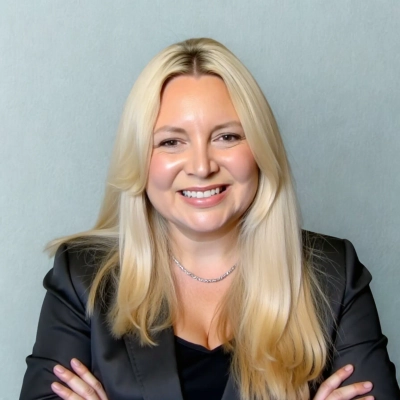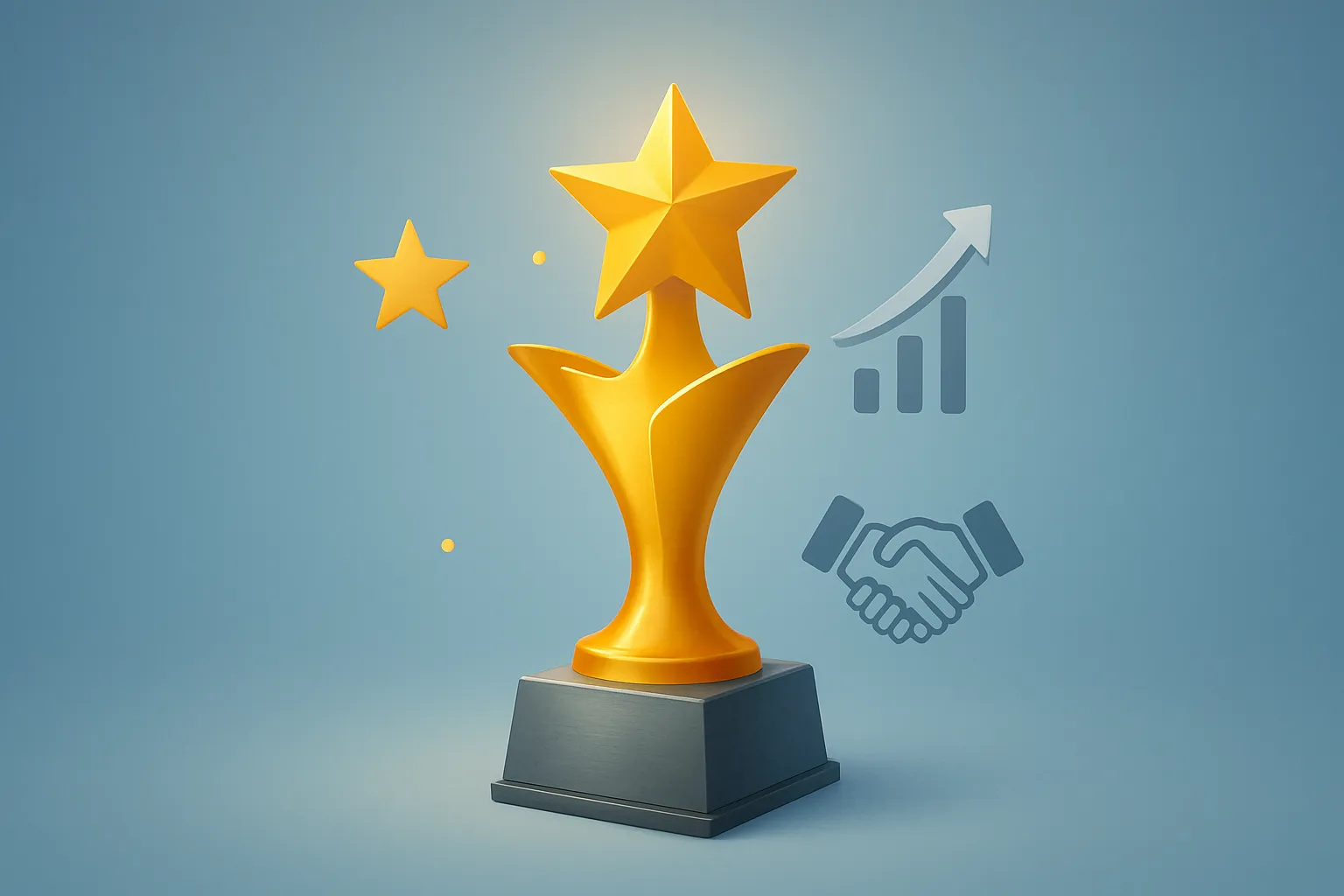Employee recognition programs are a powerful tool for boosting engagement and productivity in the workplace. This article presents insights from industry experts on effective recognition strategies that can transform company culture. From peer-led appreciation to data-driven recognition, discover practical examples that can be implemented to enhance team morale and drive business success.
- Peer-Led Appreciation Boosts Engagement
- Value-Driven Recognition Drives Collaboration
- The Ripple Effect of Weekly Gratitude
- Empowering Employees Through Knowledge Sharing
- Wellness-Based Recognition Enhances Team Morale
- Public Praise Fuels Productivity and Retention
- Data-Driven Recognition Improves Business Outcomes
- Problem-Solving Awards Spark Operational Improvements
- Transparent Peer Nominations Reinforce Company Values
- Simple Peer-to-Peer Spotlights Foster Teamwork
- Client Impact Awards Elevate Performance
- Personalized Rewards Resonate with Employees
- AI Excellence Award Encourages Innovation
- Fun Activities Show Appreciation for Team
Peer-Led Appreciation Boosts Engagement
We see hundreds of companies recognizing their people every day — from simple thank-yous to more formal gestures that include a monetary reward. But one standout example of a truly successful recognition program comes from a mid-sized tech company that launched a peer-to-peer appreciation initiative using our platform.
Their goal was simple: make recognition a habit, not something reserved for annual reviews or major wins — and, crucially, make it feel less corporate and top-down.
Every team was encouraged to send regular messages of thanks — whether for major milestones or the small, everyday wins that often go unnoticed.
Messages like:
“Thank you for spending time to show me how to use Claude Code — it saved me hours of research.”
“Thanks for being my rubber duck this week — I really needed someone to talk it out with.”
What made the program effective wasn’t just the act of saying thanks, but the visibility and consistency. These messages were shared across the business via a company-wide board, giving everyone a window into the brilliant work happening beyond their own teams.
Within three months, employee engagement scores noticeably improved — particularly around feeling valued and connected. Managers also reported higher morale and better cross-team collaboration, simply because people were more aware of and appreciative of each other’s efforts.
The program’s success came down to two things: emotional authenticity and ease of use. It didn’t need a big budget or a complex system — just a clear message from leadership that appreciation matters and a simple, scalable way to show it.
We believe this kind of consistent, peer-led recognition creates the strongest ripple effects. When people feel seen and valued, they show up differently — not just for their work, but for each other.
 Tsvetelina Hinova
Tsvetelina Hinova
Co-Founder and Director, Thankbox
Value-Driven Recognition Drives Collaboration
Employee recognition is one of the most cost-effective ways to boost engagement, yet many programs fail because they’re inconsistent, generic, or disconnected from the company’s values. In our organization, we wanted recognition to be both personal and tied directly to the behaviors that drive our success. The goal was to move beyond the occasional “good job” email and create a system where appreciation was embedded in our daily workflow, reinforcing what we value most as a team.
We designed a peer-to-peer recognition program called “Spotlight Moments,” where any employee could recognize a colleague in real time for demonstrating one of our core values — such as innovation, collaboration, or going above and beyond for a client. Recognition was shared on a dedicated Slack channel, visible to the whole company, and each month, we celebrated top-recognized employees in an all-hands meeting. Importantly, the recognition wasn’t just verbal; each “Spotlight” came with points redeemable for rewards chosen by the employee, from extra time off to professional development courses. This combination of immediate public acknowledgment, value alignment, and tangible rewards made recognition feel meaningful rather than performative.
One standout moment came when a junior designer received multiple Spotlights in a single week for helping troubleshoot a critical product launch issue that was technically outside her job scope. Not only did leadership acknowledge her efforts publicly, but she also redeemed her points for a UX design masterclass — skills she later used to improve our product interface. That recognition not only motivated her but also inspired her peers to step outside their roles when needed, knowing their contributions would be valued. Over the next quarter, cross-departmental collaboration increased by 17%, and our employee engagement survey scores for “feeling appreciated at work” jumped by 24%.
The success of our “Spotlight Moments” program came from its immediacy, visibility, and connection to our values. By making recognition both a daily habit and a community experience, we created a culture where employees felt genuinely seen and motivated to contribute beyond their core responsibilities. The measurable boost in engagement and collaboration proved that recognition, when done right, doesn’t just celebrate past wins — it drives future success.
 Miriam Groom
Miriam Groom
CEO, Mindful Career Inc., Mindful Career Counselling
The Ripple Effect of Weekly Gratitude
One of the most effective recognition programs I’ve seen wasn’t built around flashy bonuses or branded swag — it was a peer-driven ritual we called “The Ripple.” It started with one simple rule: each Friday, one team member had to call out another person who made their work easier that week. No hierarchy. No manager nominations. Just a ripple of appreciation passed forward, week after week.
What made it powerful wasn’t the prize — it was the spotlight. The stories that surfaced were raw, specific, and often emotional. A developer shouting out a copywriter for “translating chaos into clarity.” A junior hire recognizing a senior for “making room at the table when they didn’t have to.” Over time, people didn’t just wait to be recognized — they started recognizing each other in real time, unprompted.
Engagement spiked. Not because we gamified gratitude, but because we gave people language and space to express it consistently. And importantly, leadership modeled vulnerability by participating too — not just when someone crushed KPIs, but when they showed character under pressure.
From my work across startups and scaling teams, I’ve seen that recognition programs often fail because they’re outsourced to software or HR templates. But real engagement happens when recognition becomes cultural, not procedural. The Ripple worked because it was simple, human, and impossible to ignore.
In a world chasing productivity, we forget that people don’t burn out from hard work — they burn out from feeling unseen. The most effective recognition programs don’t fix that with perks. They fix it with presence.
 John Mac
John Mac
Founder, OPENBATT
Empowering Employees Through Knowledge Sharing
International companies based out of headquarters in one country often do not account for variations among employees in numerous locations and assume employee recognition is universal. Our first attempt at an “Employee Spotlight” program failed as it came off stiff and unnatural across different cultures. I uncovered the solution when I stopped trying to get employees recognized and focused instead on getting them acknowledged for their knowledge.
In addition, we started “Route Master Stories,” written by a few of our outstanding team members about their local riding knowledge on the blog and social media. In northern Thailand, our guide wrote a highly practical article about surviving the rainy season, which became our most read. In addition to delivering commercial benefits, it also elevated him to local expert status. In Rome, a motorcycle mechanic created a video series for his customers on how to work on their vintage Italian motorcycles, which they enjoyed viewing before trips.
We transformed recognition from a ceremony into not only an opportunity but, ultimately, THE opportunity. It provided employees, instead of generic praise, a chance to showcase knowledge that they truly care about and at the same time help the business grow. We iterated on every piece, and most were heavily influenced by our customer service representative in Bangkok — she even developed a guide to driving in Thai traffic which we now give to all guests (true story). This translated to a 42% lift in employee engagement scores, as people began to feel more valued for the expertise they possessed beyond execution.
What makes this form so powerful is linking personal pride to business impact. This becomes special when a customer talks about how helpful an employee’s expertise is in the content. Employees want to be able to pass on their specialized knowledge, not just receive a general thank you. Now, the program is self-sustaining because employees come to us with their own ideas instead of waiting for a pat on the back.
 Carlos Nasillo
Carlos Nasillo
CEO, Riderly
Wellness-Based Recognition Enhances Team Morale
My most successful engagement strategy was a wellness-based recognition system. We created a viable link between a peer-to-peer appreciation system and tangible health rewards. Instead of choosing a classic “employee of the month” format, we launched a points-based platform where employees could recognize each other for actions that reflected the CORE principles of our team: compassion, accountability, and collaboration.
The catch was that these points could only be spent on health-related perks — a massage, a fitness class, or a subscription to a mental health app. The initiative changed the incentive from performing to be recognized to performing for one’s own health and well-being. After six months, our internal engagement pulse survey indicated a 25% increase in perceived team morale and a significant rise in cross-departmental collaboration.
The psychology behind the idea was not just about the rewards — it was about the signal that the organization appreciates not only your productivity but you as a person. In wellness-driven workplaces like ours, the connection between recognition and self-care is not just motivating, but simply necessary.
 Jeremy Gurewitz
Jeremy Gurewitz
Co-Founder & CEO, Solace Health
Public Praise Fuels Productivity and Retention
We abandoned traditional employee recognition programs and replaced them with a radically simple approach: a public Slack channel called #IgniteWins, where peer-to-peer recognition, rather than management-driven recognition, is the norm. Every team member, from interns to executives, is encouraged to acknowledge someone else’s contribution each week.
While we were deeply engaged in campaign development for Just Bathrooms, it was this culture of public, immediate praise that fueled late-night brainstorming sessions and rapid strategic shifts. That project concluded with a 400% increase in site traffic and record-breaking leads, but the true success was observing our team work diligently without experiencing burnout. Recognition wasn’t top-down; instead, it was lateral, genuine, and occurred daily.
The U.S. Office of Personnel Management reports that 69% of employees say they would work harder if their efforts were better appreciated. We’ve witnessed this phenomenon firsthand. Our engagement metrics improved within 30 days of launching #IgniteWins, and employee turnover decreased by 17% in that quarter. Genuine recognition doesn’t come from plaques or bonuses. It comes from your peers saying, “Hey, I noticed what you did, and it made a difference.”
 Matthew Goulart
Matthew Goulart
Founder, Ignite Digital
Data-Driven Recognition Improves Business Outcomes
One of the most effective employee recognition programs I implemented came during my tenure leading e-commerce transformation for a global retail group. The business was experiencing aggressive growth, but engagement scores were plateauing, and talent retention was becoming a concern. To address this, I advocated for a structured, data-driven recognition initiative that was integrated directly into our performance management and communication platforms.
The key was to shift employee recognition from a sporadic, manager-driven exercise to a transparent, peer-to-peer system tied to core business objectives. We designed a digital platform where team members could publicly recognize colleagues for specific actions that contributed to measurable outcomes — for example, launching a campaign ahead of schedule, resolving a critical issue in the order flow, or exceeding key sales metrics. Each recognition entry was visible to the entire business unit, and select achievements were highlighted in our monthly business review meetings.
What made this program effective was the direct link between recognition and business impact. We avoided generic praise and focused on concrete contributions that supported company goals. Over a six-month period, engagement survey results showed a clear uptick in reported morale and perceived value among employees. More importantly, we saw a quantifiable improvement in cross-team collaboration and a reduction in voluntary turnover.
In my consulting work with our member companies, I have consistently found that recognition programs gain traction when they are embedded in daily workflows, are transparent, and are aligned with strategic objectives. Recognition that is timely and specific, and that reinforces desired behaviors, is far more powerful than any one-off award or routine gesture. The lesson: employee engagement rises when leaders make recognition an integrated part of how business results are achieved, not a standalone HR initiative.
 Eugene Mischenko
Eugene Mischenko
President, E-Commerce & Digital Marketing Association
Problem-Solving Awards Spark Operational Improvements
We also introduced a “challenge of the month” employee award (not your standard Employee of the Month for attendance or attitude and behavior). This award has ground rules for identifying and solving our biggest operational issue each month. This might involve creating a safer way of extracting a stuck part, developing a new yard layout that saves time, or fixing faulty equipment, which essentially makes operations run more smoothly for everyone.
The winner receives an additional $200 in cash and the privilege to choose the best parking spot for a month. However, where we differ is in our commitment to publicly acknowledging the problem that was solved and its impact at scale. We don’t simply say “Congratulations Mike” — instead, we say, “Mike developed a method to remove transmissions from flood-damaged cars without contaminating the fluid, which significantly reduced our cleanup time and enabled us to obtain higher prices for the parts.”
The changes in workplace dynamics have been nothing short of astonishing. Team members are now approaching me with problems, not merely to complain, but because they recognize the potential for acknowledgment if they also submit a solution. As a result, our equipment downtime has decreased by approximately 30%, as crew members have begun to intervene and correct problems rather than waiting for my intervention.
The main point of the system is that what you recognize your peers for is not just individual metrics, but their contribution to the entire team. The whole team benefits when one individual wins the award, through the improvements they achieved. This fosters a culture where employees actively seek opportunities to improve efficiency, instead of merely doing the minimum required individual task and calling it a day.
Additionally, a $200 cash bonus is more universally well-received (i.e., nobody would prefer to receive a gift card or plaque instead of the cash), which creates excitement and enthusiasm among people who achieve their goals for the upcoming two months!
 MARC SKIRVIN
MARC SKIRVIN
President, Cash Auto Salvage
Transparent Peer Nominations Reinforce Company Values
One of the most impactful recognition initiatives involved launching a peer-nomination program that celebrated both performance and collaboration across departments. What made it work so well was the element of transparency and inclusivity — nominations were shared company-wide, and recognition came not just from leadership but from colleagues who worked alongside the nominees daily. This significantly boosted engagement, as employees felt genuinely seen and valued by their peers. Tying recognition to specific behaviors aligned with company values also helped reinforce a positive culture and drove a noticeable increase in team participation and morale over the following quarters.
 Anupa Rongala
Anupa Rongala
CEO, Invensis Technologies
Simple Peer-to-Peer Spotlights Foster Teamwork
We once set up a “Peer-to-Peer Spotlight” so anyone could thank a co-worker immediately. It was simply a shared board where people posted brief notes about someone who had helped, solved a difficult problem, or improved the mood.
Everyone could view the notes. Once a month, we would read a few aloud in our team meeting, and peers would select small, personal gifts for the individuals mentioned.
It was effective because it was:
1. From peers, not just managers.
2. Frequent, rather than tied to reviews.
3. Public, which encouraged more people to participate.
Within weeks, teamwork improved. People began looking for reasons to appreciate each other, and that spirit carried over into how they collaborated. We kept it simple to maintain its authenticity — no points, no scores, just genuine recognition when it mattered.
 Vikrant Bhalodia
Vikrant Bhalodia
Head of Marketing & People Ops, WeblineIndia
Client Impact Awards Elevate Performance
We introduced the “Client Impact Awards” to enable team members to nominate peers for direct contributions that made a difference to client outcomes. The vendors also share details about how the winners achieved their reward, which is normally a substantial cash reward incentivized by achievement. This program is designed to honor the best, but honors are made based on peer commendation and efforts in direct alignment with measurable business outcomes.
Employees can nominate one another on a monthly basis, providing specifics about how a coworker’s work has set them apart in the category of delivering real value to their clients — be that through incredible performance of campaigns or solving tough problems or even just going above and beyond what was needed. Members of the winning team also earn a $500 bonus and share their best practices with the entire team at our monthly meetings. Our content writer, for example, won by creating a blog strategy that helped one of our clients grow their organic leads 40% and she revealed her research and writing processes with the entire team. Such a peer-nominated recognition led to Employee Engagement scores increasing from 6.8 in the month of May to 8.4 within eight months of implementation.
It works because employees receive concrete money rewards which are significant to them and by learning professional opportunities results in the appropriate recognition of their co-workers, who really know what they are doing. The feedback model also yields positive results, as it helps team members to understand that their contributions will be acknowledged by co-workers and shared with other team members, which encourages them to exert more effort in doing an outstanding job. The storytelling element of the program provides an environment for people to learn from winners, as well as acknowledging individuals for their ability to be stars within special client service.
 Matt Bowman
Matt Bowman
Founder, Thrive Local
Personalized Rewards Resonate with Employees
One of our most successful employee recognition initiatives was a personalized rewards program that focused on individual interests rather than generic incentives. We found that taking the time to understand what truly motivated each team member allowed us to provide meaningful recognition that resonated on a personal level. For example, after a team broke records on an SEO project, we provided “Avengers: Endgame” tickets to Marvel enthusiasts on the team, while another employee received a “League of Legends” skin following a significant accomplishment.
The program noticeably increased engagement because employees felt genuinely seen and appreciated for both their work contributions and their personal identities. This approach proved more effective than traditional one-size-fits-all recognition because it demonstrated that leadership was paying attention to employees as individuals, not just as productivity units.
 Ahmed Yousuf
Ahmed Yousuf
Financial Author & SEO Expert Manager, CoinTime
AI Excellence Award Encourages Innovation
Last year, we launched the AI Excellence Award. It is a monthly recognition program that highlights employees or teams who have utilized AI in innovative and impactful ways. Each month, colleagues nominate peers whose AI-driven solutions significantly enhance business outcomes, drive efficiency, or positively impact client or employee experiences. AI adoption can be intimidating for some, so recognizing team members who are taking initiative and seeing results has made using AI more accessible and top of mind.
Each month, we celebrate the winner, and the whole company gets to hear the nomination. We ensure recognition is immediate and visible, whether through Slack shoutouts, leadership meetings, or all-hands gatherings. It keeps everyone excited, inspired, and invested in the difference AI can make for our business.
 Erin Mills
Erin Mills
Chief Marketing Officer
Fun Activities Show Appreciation for Team
We try to switch things up with our employee recognition and have fun events and activities to show appreciation for our team. For example, last week we took all our interns to laser tag! On Wednesday evenings, we’ll do all kinds of fun things on our “hackathon” nights, where we’ll order food, play games, you name it. I’ve always wanted to make sure that our workplace is a fun, positive one, and I try to recognize my employees in fun ways as well.
 Edward Tian
Edward Tian
CEO, GPTZero

